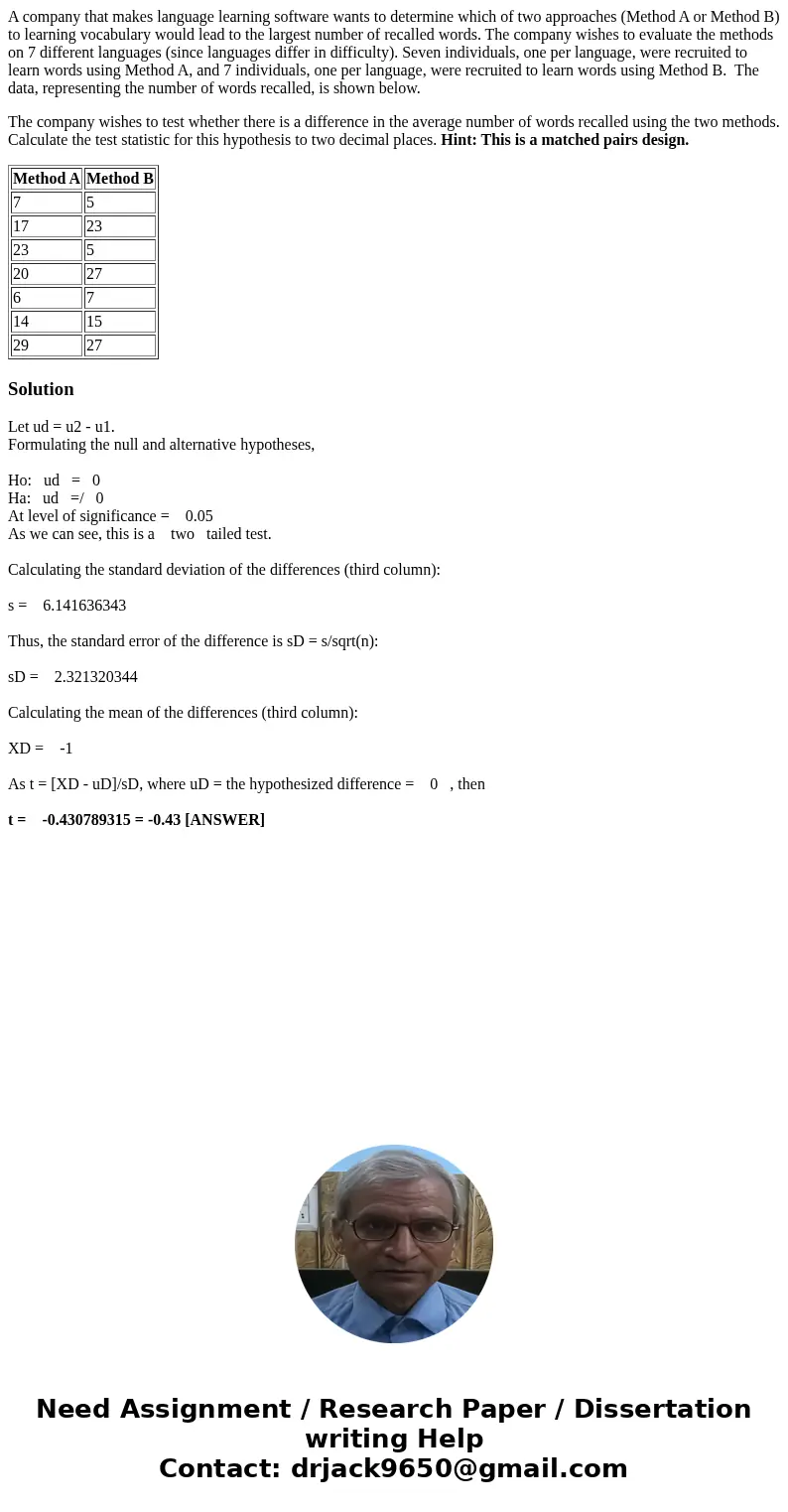A company that makes language learning software wants to det
A company that makes language learning software wants to determine which of two approaches (Method A or Method B) to learning vocabulary would lead to the largest number of recalled words. The company wishes to evaluate the methods on 7 different languages (since languages differ in difficulty). Seven individuals, one per language, were recruited to learn words using Method A, and 7 individuals, one per language, were recruited to learn words using Method B. The data, representing the number of words recalled, is shown below.
The company wishes to test whether there is a difference in the average number of words recalled using the two methods. Calculate the test statistic for this hypothesis to two decimal places. Hint: This is a matched pairs design.
| Method A | Method B |
| 7 | 5 |
| 17 | 23 |
| 23 | 5 |
| 20 | 27 |
| 6 | 7 |
| 14 | 15 |
| 29 | 27 |
Solution
Let ud = u2 - u1.
Formulating the null and alternative hypotheses,
Ho: ud = 0
Ha: ud =/ 0
At level of significance = 0.05
As we can see, this is a two tailed test.
Calculating the standard deviation of the differences (third column):
s = 6.141636343
Thus, the standard error of the difference is sD = s/sqrt(n):
sD = 2.321320344
Calculating the mean of the differences (third column):
XD = -1
As t = [XD - uD]/sD, where uD = the hypothesized difference = 0 , then
t = -0.430789315 = -0.43 [ANSWER]

 Homework Sourse
Homework Sourse